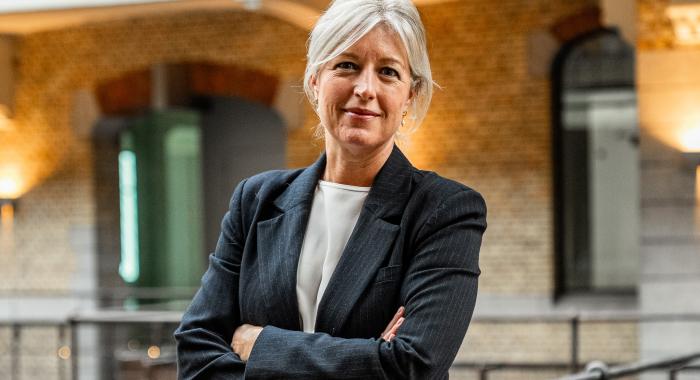MiCAR and FTR published in the Official Journal
In 2020, in order to support the digital transition and create an innovation-friendly regulatory framework for financial services, the EU proposed a Digital Finance Package centered around the following three main acts:
- Regulation (EU) 2022/858 of 30 May 2022 on a pilot regime on distributed ledger technologies market infrastructures (DLT Pilot Regime), applicable as from 23 March 2023 (see our e-zine here);
- Regulation (EU) 2022/2254 of 14 December 2022 on digital operational resilience for the financial sector and amending Regulations (EC) No 1060/2009, (EU) No 648/2012, (EU) No 600/2014, (EU) No 909/2014 and (EU) 2016/1011 (DORA);
- Regulation (EU) 2023/1114 of 31 May 2023 on markets in crypto-assets on markets in crypto-assets, and amending Regulations (EU) No 1093/2010 and (EU) No 1095/2010 and Directives 2013/36/EU and (EU) 2019/1937 (MiCAR);
Last Friday, the much-anticipated MiCAR was finally published in the Official Journal. In this e-zine, we discuss the main features of MiCAR and briefly touch on the new Funds Transfer Regulation.
1 SCOPE – CRYPTO-ASSETS
The purpose of MiCAR is to create a harmonized legal framework for crypto-assets and crypto-activities and issuers that are not yet regulated by existing EU financial services legislation.
Under MiCAR, a crypto-asset is defined broadly as a digital representation of a value or a right that is able to be transferred and stored electronically, using distributed ledger technology or similar technology.
MiCAR defines three categories of crypto-assets, each entailing their own obligations and requirements based on their perceived degree of risk:
- crypto-assets aimed at maintaining a stable value by referencing the value of one official currency (E-Money Tokens or EMTs);
- crypto-assets that are not EMTs and that are aimed at maintaining a stable value by referencing another value or right or a combination thereof, including one or more official currencies (Asset-Referenced Tokens or ARTs);
- a residual category including all crypto-assets that are not EMTs or ARTs. This category covers a wide array of crypto-assets including non-pegged payment crypto-assets like Bitcoin or Ether and utility tokens. Utility tokens are crypto-assets which are only intended to allow access to a good or a service supplied by their issuer.
On the other hand, MiCAR does not cover crypto-assets such as security tokens that qualify as financial instruments under MiFID II. Non-fungible crypto-assets are also excluded from its scope, although the Regulation provides for a possibility to regulate them later on. Central bank digital currencies are equally out of scope.
2 CRYPTO-ASSET ISSUERS
MiCAR regulates both issuers of crypto-assets and providers of services related to crypto-assets in the European Union.
Issuers of crypto-assets will have to comply with a number of obligations when offering crypto-assets to the public or when these assets are admitted on a trading platform. The extent of these obligations depends on the type of crypto-asset offered.
Authorisation
All issuers of crypto-assets must be legal entities. An issuer of EMTs must be authorised as a credit institution or an electronic money institution and be established in the EU, while issuers of ARTs must be authorised either under MiCAR or as a credit institution and be established in the EU. Issuers of crypto-assets other than EMTs or ARTs do not require a license and can be established anywhere.
Crypto-asset white paper
MiCAR introduces an obligation for all issuers of crypto-assets to publish and notify to the competent authority a crypto-asset white paper when they offer crypto-assets to the public or ask for admission of a crypto-asset to trading on a trading platform for crypto-assets.
The disclosures made in the white paper vary depending on the type of crypto-asset offered. They include amongst others information about:
- the issuer or offeror;
- the crypto-asset itself and, for crypto-assets other than EMTs or ARTs, the crypto-asset project;
- the operator of the trading platform;
- the offer;
- the rights and obligations attached to the crypto-asset;
- the underlying technology;
- the risks;
- the principal adverse environmental and climate related impact of the consensus mechanism used to issue the crypto-asset;
- for ARTs, the reserve of assets.
Additional requirements for EMTs and ARTs
Like electronic money, EMTs amount to a claim on their issuer and be redeemable at par. At least 30 % of the funds received in exchange for EMTs must be deposited in separate bank accounts and the remaining funds can only be invested in secure, low-risk assets that are denominated in the same currency as the one referenced by the EMT.
Issuers of ARTs are subject to specific requirements on own funds and need to constitute and maintain a reserve of assets, meaning a basket of assets securing the claim towards the issuer of an ART. The holder of an ART has in fact at all times a right of redemption against the issuer of the token by either receiving in cash the equivalent of the market value of the token or by the delivery of the assets referenced by the token.
Issuers of EMTs and ARTs are also prohibited from granting interest in relation to the tokens. Issuers of EMTs and ARTs that are considered significant and may thus pose greater risks to financial stability further need to comply with additional prudential obligations such as higher own funds requirements.
Right of withdrawal
Retail holders of crypto-assets other than EMTs or ARTs will benefit from a right of withdrawal, giving them a period of 14 days to withdraw from their agreement to purchase those crypto-assets. Exercising this right may not incur any fees or costs and the retail holder does not need to justify his decision.
This right of withdrawal does not apply, however, where the crypto-assets have been admitted to trading prior to their purchase by the retail holder.
3 OBLIGATIONS OF CRYPTO-ASSET SERVICE PROVIDERS
In addition to the rules that apply to crypto-asset issuers, MiCAR also creates a regulatory framework for crypto-asset service providers (CASPs). These are legal persons or entities that provide one or more of the following crypto-asset services:
- the custody and administration of crypto-assets on behalf of third parties;
- the operation of a trading platform for crypto-assets;
- the exchange of crypto-assets for funds;
- the exchange of crypto-assets for other crypto-assets;
- the execution of orders for crypto-assets on behalf of third parties;
- placing of crypto-assets;
- providing transfer services for crypto-assets on behalf of third parties;
- the reception and transmission of orders for crypto-assets on behalf of third parties;
- providing advice on crypto-assets; and
- providing portfolio management on crypto-assets.
Authorisation and supervision
CASPs either need to obtain an authorisation as a crypto-asset service provider under MiCAR or they can operate, within certain limits, under an authorisation as credit institution, central securities depository, investment firm, market operator, e-money institution, management company of a UCITS or alternative investment fund manager.
An application for authorisation as a CASP under MiCAR will need to be submitted to the national competent authority. In Belgian this will normally be the Financial Services and Markets Authority. The conditions for authorisation must remain fulfilled at all times, and the authorisation may be withdrawn by the national competent authority in specific situations. Importantly, MiCAR introduces a European passport allowing the provision of crypto-asset services in other EU Member States, either through the right of establishment or through the freedom to provide services.
General and specific requirements for authorised crypto-assets services providers
CASPs must comply with a number of general requirements such as conduct of business rules, prudential safeguards, governance arrangements, safekeeping of client’s crypto-assets and funds, complaints handling procedures, management of conflicts of interest and outsourcing. In addition, specific obligations must be complied with depending on the type of crypto-asset service that is provided.
4 MARKET ABUSE REGIME FOR ISSUERS OF CRYPTO-ASSETS AND CRYPTO-ASSET SERVICE PROVIDERS
To ensure confidence in the crypto-asset markets and their integrity, the European legislator deemed it important to lay down rules to deter market abuse for crypto-assets that are admitted to trading on a trading platform for crypto-assets. Because most issuers of crypto-assets and crypto-asset service providers are very often SMEs, application of the standard market abuse regime was considered disproportionate. MiCAR therefore provides for specific market abuse rules covering the following:
- inside information and public disclosure of inside information;
- prohibition of insider dealing;
- prohibition of unlawful disclosure of inside information;
- prohibition of market manipulation; and
- prevention and detection of market abuse.
5 TRAVEL RULE EXTENDED TO TRANSFERS IN CRYPTO-ASSETS
In traditional finance, payment service providers are already subject to the requirement to accompany transfers of funds with information on the payer and the payee (so-called ‘travel rule’). Regulation (EU) 2015/847 that provides for this obligation will now be replaced by Regulation (EU) 2023/1113 (Funds Transfer Regulation or FTR), published in the Official Journal on the same day as MiCAR.
Under the new FTR, forming part of the new EU anti-money laundering package, the existing travel rule is extended to CASPs. The CASP of the originator will need to ensure that transfers of crypto-assets are accompanied by the name of the originator and of the beneficiary, their distributed ledger addresses and/or crypto-asset account numbers, the originator’s address or the originator’s date and place of birth and, where applicable, the originator's and the beneficiary's legal entity identifier. In case of batch file transfers of crypto-assets from a single originator, the obligation to provide information on the originator does not apply to the individual transfers bundled together therein provided that certain conditions are met.
The CASP of the beneficiary must implement effective procedures in order to detect whether the information on the originator or the beneficiary is included in or follows the transfer or batch file transfer of crypto-assets, and implement effective risk-based procedures for determining whether to execute, reject, return or suspend a transfer of crypto-assets lacking the required information.
CASPs will be required to provide this information to competent authorities if a money laundering or terrorist financing investigation is conducted.
6 ENTRY INTO FORCE AND APPLICATION
MiCAR will enter into force on 29 June 2023. It will apply from 30 December 2024, although the regime on ARTs and EMTs will apply from 30 June 2024. The new FTR will also enter into force on 29 June 2023 and apply from 30 December 2024.
***
The Lydian Banking and Finance team has extensive knowledge of financial services legislation and FinTech. Please do not hesitate to contact us should you have any questions or if you want to discuss how we can assist you with navigating the regulatory environment.


